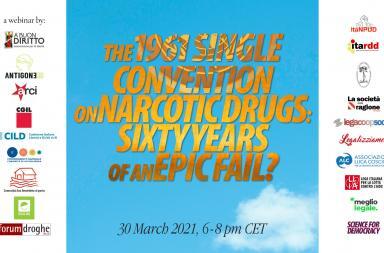This post is also available in:  Italiano (Italian)
Italiano (Italian)
On the occasion of the International Day against abuse and illicit drug trafficking promoted by the UN, the tenth edition of the White Paper on drugs was presented at the Press Room of the Italian House of Deputies. La Società della Ragione, together with Forum Droghe, Antigone, CGIL, CNCA and Luca Coscioni Association and with the support of A Buon Diritto, Arci, Community of San Benedetto al Porto, FP CGIL, Gruppo Abele, ITARDD, LegaCoopSociali, LILA. The event was organized within the international Support Don’t Punish campaign to defend the rights of those who use substances that this year will touch more than 200 cities in 94 countries.
Main Trends and Statistics
Almost thirty after its approval, the 1990 drug law (Jervolino-Vassalli Act) is still the main repressive and sanctioning law (in particular its Article 73) for entry in the Italian justice and jail systems.
Out of 47,258 newly incarcerated people in 2018, 14,118 are people accused or convicted of offences to that Article 73 (drug possession for the purpose of dealing). This figure – 29.87 per cent of the total – confirms a downward trend emerged since 2012, following the Torreggiani ruling by the ECHR and the adoption of deflationary policies for detainees. There is a tiny decrease compared to last year data (14,139 people) but an overall increase in percentage points (29.37 per cent).
On 31 December 2018, 14,579 detainees out the total of almost 60,000 were charged only with dealing (Article 73). An additional 5,488 detainees were also charged with association aimed at illicit trafficking in drugs and psychotropic substances (Article 74), while an extra 940 detainees were charged only with Article 74 – showing a slight decrease from 2017 (974 detainees). Compared to the previous year, there is an overall increase of 6.5 percentage points.
27.94 per cent of total detainees are drug addicts (16.669 out of 59.655): A percentage that exceeds the peak caused by the Fini-Giovanardi Act (27.57 per cent in 2007), which later decreased due to some corrective legislative measures. Also worrisome is a surge in newly incarcerated drug addicts: A record high of 35,53 per cent (34,05 per cent in 2017).
As already emerged in our previous White Papers, the 2018 data show a new spike in overall detainees and a subsequent increase of people incarcerated only for drug-related crimes. Still in the foreground is a growing trend to criminalize people mostly based on the most punitive parts of current drug laws, particularly on such policies as zero tolerance and strict social control. Instead, a reduction of the jail population requires a decriminalization of those behaviors directly related drug circulation. To avoid this on-going prison overcrowding and its related problems, it would suffice to avoid jail sentences for non-violent crimes to Article 73 or for drug addicts.
Finally, people subject to pending criminal proceedings in violation of Article 73 and 74 are respectively 178,819 (+5.005, that is +2.9 per cent compared to previous year) and 43,335 (+1,154, that is + 2,7 per cent compared to previous year). These figures are similar to the dark years of the Fini-Giovanardi Act, with dire consequences on the entire judicial systems.
Alternative Measures and Administrative Sanctions
A positive trend is a regular increase in the application of so-called alternative measures, a trend that started in 2016. This bodes well especially for the autonomy of recovery community for drug or alcohol addict inmates.
On the other hand, the reports to local authorities (Prefect) for illicit drug use have dramatically expanded. In 2018 they reached a total of 39,278 reports, with a confirmed surge about minors: + 394,4 per cent in three years. The “therapeutic” option of these reporting to the Prefect is irrelevant: out of 39,278 reported persons, only 82 were asked to join a socio-medical treatment program (in 2017 they were 3,008). Overall administrative sanctions were imposed on 36 per cent of total reports, an increase over the previous year. Therefore, such reporting activities of drug users reveals a mostly sanctioning nature. This repressive trend affects for the vast majority cannabis users (79.18 per cent), followed by cocaine (14.34 per cent) and heroin (4.39 per cent) users. Since 1990, 1,267,183 people have been reported to local Prefects for possession of drugs for personal use; of these, 73.11 per cent (926,478) are marijuana users.
Finally, according to 2018 data provided by Highway Police, ISTAT and DPA only 1,14 per cent of drivers involved in road accidents were accused of violating the Article 187 of the Road Code (driving under the influence of psychoactive drugs). Similar results are provided by an experimental quick screening of suspected drivers: just over 1 per cent actually tested positive, and over 20 per cent of them later are found negative by more accurate lab tests.




